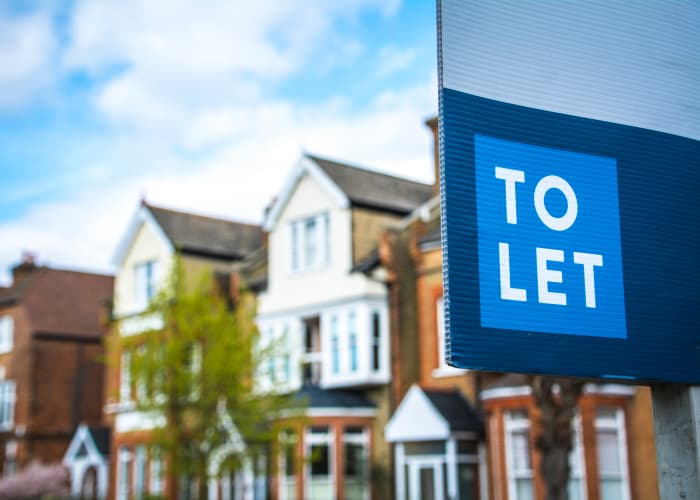A good rental yield is the foundation of a profitable buy-to-let business. But how do you get one, and what is a good yield? The answer depends on where you want to invest, and whether you choose residential or commercial property.
This article tells you all you need to know about rental yield – what it is, how it works and why it’s important. That way, you’ll be confident when assessing your next investment property and can pick the one that delivers the best return on investment.
What is a rental yield?
Rental yield is the financial return you make when renting a buy-to-let property, often represented as a percentage. Your yield will vary depending on several factors, including location and property size.
However, rental yield is not the same as profit. You’ll need to subtract mortgage payments and other ongoing costs to work this out accurately.
It’s important to say that rental yield does not tell you exactly how much rent you will get. Instead, it should tell you how much you will likely make based on expected rent.
How important is rental yield?
While it’s critical to consider rental yield, you’ll need to think of other factors when investing in buy-to-let property.
For example:
1 The growth in property prices
You may have decent rental yields initially, but if you plan to sell your property one day or charge higher rent, you’ll also want to see capital growth. That’s why it’s good to buy a property where the rental market and property values are due to increase.
2 The demand for rental properties
You’ll need to consider whether an area is popular with renters and is in demand. If not, you may need help finding tenants and face costly void periods.
Investigating the local property market means that you can supplement high-rental yields with ongoing demand from tenants, growing property value and a burgeoning investment.
How important is rental yield for buy-to-let mortgages?
It’s important because BTL mortgages have strict criteria. You must be able to prove you can pay the mortgage comfortably. For that reason, a robust rental yield will help convince the bank to lend you the funds for your property investment.
Why is rental yield important?
Rental yield is significant because it tells you how much money you’re likely to make, offset against the cost of your property. The higher the rental yield, the better your return on investment.
While this doesn’t spell out the rent you’ll receive, it gives you a better idea of what properties are good investment opportunities – and which aren’t. That way, you’ll have the information you need to build a profitable buy-to-let business.
What is a good rental yield in the UK?
Rental yields change yearly and vary drastically across different regions, though the average yield is 4.75%. For a long time, rental yields have been highest in the north/north-west of England and lower in the south. This is mainly due to significantly higher property costs near London, leading to lower rental yields.
However, it’s important to remember that rental yields vary within any given city. Each area has unique features; some districts offer much better rental opportunities than others. For example, if you rent a home in the M3 postcode near the centre of Manchester, you are likely to get a 5.6% rental yield. However, renting in the M14/19 district of Fallowfield could net you a massive 9.5% yield instead! This is why it’s important to really get to know the area where you plan to purchase a buy-to-let property.
What is a good rental yield in London?
Properties usually have a lower rental yield in London, that’s because of the high investment needed to purchase the property in the first place.
If you choose to let a property in London, then Barking and Dagenham have the highest rental yields – currently at 5.3%. After that, Havering and Newham provide reasonable yields. Both these areas offer approximately 4.9% yields.
What is a good rental yield for commercial property?
Around 7% yield is good for commercial property. Equally, commercial yields tend to outperform residential yields on a like-for-like basis, averaging 5.7%.
However, there are other factors you’ll need to consider aside from high rental yield when investing in commercial property. While the potential yields can be excellent, there are also more risks, including:
- More work to sell: Commercial properties are less ‘liquid ‘than residential properties. In a difficult market they are harder to sell, and are easily affected by a change in the local or national economy.
- Void period risks: Void periods are a major risk. That’s because it takes more work to find tenants for commercial properties. A landlord facing a void period will also be liable to pay business rates and any mortgage costs they owe.
How to work out rental yield
It’s crucial to work out your yield to ensure your investment property is profitable. This is how you can calculate your rental yield:
- Know the price paid for the property.
- Work out your annual rental income.
- Divide the rent by the price paid for the property.
- Multiply this number by 100, giving you a percentage amount.
- Then, you will arrive at your rental yield.
To use a specific example:
Say you buy a flat in Manchester for £150,000 and expect to receive an average rent of £875 per month. Across 12 months, you would get £10,500 in rent. £10,500 divided by £150,000 = £0.07. Then 0.07 x 100 = 7. This gives you your rental yield percentage: 7%.
However, there are two ways to work out rental yield:
- Gross rental yield – This represents your rental income before considering associated costs. For example, letting agency fees or necessary renovation costs.
- Net rental yield – This represents your rental income after considering other expenses. It is more accurate, and easier to calculate if you’ve a clear awareness of the costs involved (this is harder with a brand-new investment).
How to work out net rental yield: Monthly rent x 12, subtract property price and all associated costs, then multiply by 100 to arrive at the correct percentage yield.
Additional buy-to-let costs to consider
You’ll incur numerous costs as a residential or commercial landlord, which need to be factored into your rental yield. Here are some of the expenses you will need to consider:
- The deposit – Large deposits are a well-known requirement for buy-to-let properties. Paying at least 25% of the deposit on your new investment property is common.
- Mortgage repayments – You’ll need enough capital to pay off your buy-to-let mortgage. Remember to consider arrangement fees and interest when calculating this.
- Insurance – As a landlord, you’ll need to get both building and landlord insurance. This is often a requirement from your mortgage lender.
- Maintenance – Over the long term, you’ll need to save money for maintenance costs. For example, this could pay for window cleaning, lawn mowing, or small breakages within the property. Equally, leasehold properties often come with a monthly service charge you’ll have to pay.
- Health & Safety – You’re required to pay any costs to keep the property compliant with the law. For example, you must pay a registered engineer to inspect the gas works yearly. And every 10 years, you’ll need to renew your Energy Performance Certificate (EPC).
- Letting agency fees – If you rent your property through an agency, you’ll have to factor in any regular payments to them.
In conclusion
Rental yield is a vital metric for UK buy-to-let property investors, but you must remember to count the costs involved and research the local area where you intend to buy. If you do this, you’ll be well on your way to a wise investment which delivers consistent profits over the long term.






